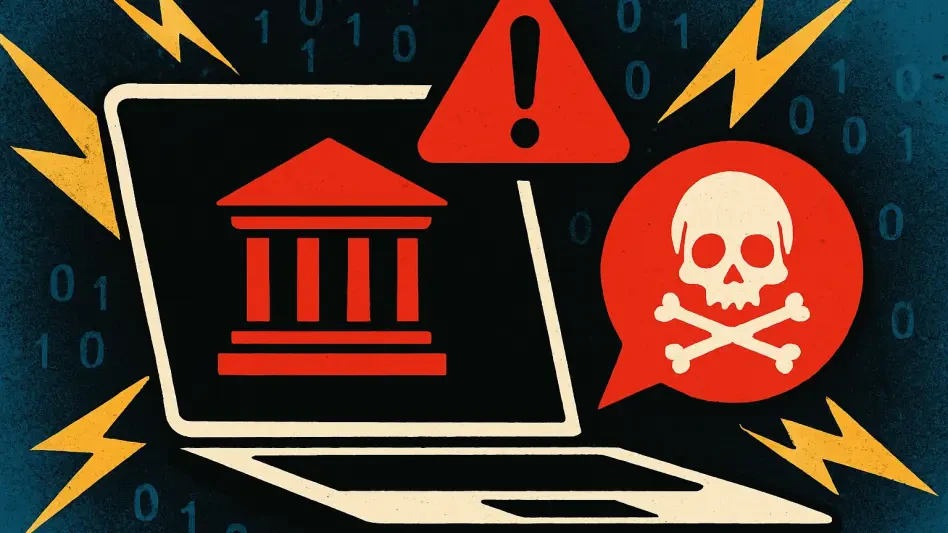The increasing risk of insider threats within federal agencies has become a major concern amid ongoing cybersecurity challenges. Maurice Uenuma, VP & GM, Americas, Blancco, highlights the escalating potential for data breaches and vulnerabilities that arise from constant disruptions and restructuring within U.S. federal organizations. These cybersecurity threats are exacerbated not just by external adversaries such as nation-state attackers and hackers-for-profit but also by internal agency issues, making the environment even more difficult to navigate.
Surge in Cyber-Attacks and the CISO’s Role
Recent years have witnessed a dramatic surge in cyber-attacks, particularly those originating from China-nexus actors, who have increased their activity by over 150%. In some sectors, this increase has skyrocketed to between 200-300% compared to the previous year. This sharp rise underscores the critical role that Chief Information Security Officers (CISOs) play in protecting their organizations from such threats. The importance of adopting a comprehensive, vigilant 360-degree security approach cannot be overstated, as it is vital for shielding corporate data and personally identifiable information (PII) amidst these escalated threats.
CISOs are increasingly called upon to implement robust security measures that extend beyond the conventional. This includes managing and mitigating risks posed by both external and internal sources. The vigilance and proactive strategies employed by CISOs are essential in early threat detection and neutralization, thereby minimizing potential damage. The role of a CISO has evolved significantly, becoming a linchpin in the effort to secure vital information systems and maintain organizational integrity in the face of sophisticated cyber threats.
Insider Threat Statistics and Real-World Examples
A March 2025 report from Mimecast underscores the gravity of insider threats by revealing that 95% of all data breaches in the previous year were caused by insider activities, misuse of credentials, and user-driven errors. Such statistics illuminate the urgent need to address insider threats head-on. A particularly egregious example involves an IT Asset Disposition (ITAD) employee who sidestepped proper disposal processes, stole, and sold hundreds of government-owned devices. This case highlights the severe impact of inadequate security protocols regarding asset disposition and the dire consequences that can ensue from such lapses.
The stolen devices not only put sensitive governmental data at risk but also exposed the significant vulnerabilities in the existing security infrastructure. Court documents reveal the employee went so far as to provide fake data erasure certificates to unsuspecting buyers, further deepening the breach of trust and security. This real-world example serves as a stark reminder of the heightened need for stringent security measures and thorough oversight within federal agencies to prevent similar occurrences in the future.
Impact of Federal Agency Disruptions
The ongoing shake-up within federal agencies is another significant factor contributing to the escalating risk of security breaches. With up to 225,000 federal workers affected by retirements, firings, or layoffs, as reported by various media sources, the potential for disgruntled employees engaging in malicious activities such as espionage and data breaches becomes increasingly significant. The instability within these organizations creates fertile ground for internal disruptions, further complicating efforts to maintain robust cybersecurity.
Amidst this volatility, agencies must remain vigilant against potential insider threats posed by former employees who might exploit their prior access to sensitive information. The challenge is magnified by the broader context of workforce fluctuations and the accompanying risk of knowledge transfer to unauthorized parties. Without a comprehensive strategy to address these issues, federal agencies remain vulnerable to breaches that can have far-reaching and potentially devastating consequences for national security.
Lax IT Asset Management Policies
An alarming level of laxity in managing IT assets, particularly within government agencies, has been highlighted in recent directives. For example, IRS employees returning to the office were merely instructed to secure their laptops and equipment using cable locks or put them in designated storage areas. This approach reveals a glaring inadequacy in the asset chain of custody policies, which are vital for ensuring that sensitive data on government-owned devices is not easily accessible to malicious actors.
The casual handling of IT assets presents significant vulnerabilities that cybercriminals can exploit, exacerbating the risk of data breaches. The lack of rigorous protocols for the physical security and chain of custody of IT assets underscores a broader issue of insufficient attention to detail in safeguarding sensitive information. Agencies need to adopt stringent and proactive asset management policies to counter the high stakes of data exposure and theft, reinforcing the importance of securing every link in the chain of custody.
Best Practices for Mitigating Insider Threats
Mitigating insider threats necessitates a comprehensive approach that includes meticulous oversight and regular audits of security policies. These practices help organizations ensure that their security measures remain effective. One of the fundamental principles in combating insider threats is implementing robust access controls and adhering strictly to the principle of least privilege. In doing so, organizations limit access to data and systems to only those employees whose roles require it, thereby reducing the risk of misuse.
Another critical element in mitigating insider threats is investing in regular employee training and awareness programs. Educating staff on best security practices, such as recognizing phishing attempts and social engineering attacks, understanding the ramifications of sharing sensitive information, and knowing how to report suspicious activities play a significant role in bolstering organizational security. Establishing a clear and efficient process for managing these reports further enhances the organization’s ability to respond quickly and effectively to potential threats.
Importance of IT Asset Chain of Custody
The growing risk of insider threats within federal agencies is a significant concern in light of persistent cybersecurity challenges. Maurice Uenuma, VP & GM, Americas, Blancco, emphasizes the increasing likelihood of data breaches and vulnerabilities due to ongoing disruptions and restructuring within U.S. federal organizations. These cybersecurity threats are not only amplified by external actors such as nation-state attackers and profit-driven hackers but also compounded by internal issues within the agencies themselves. This dual threat environment makes the situation even more challenging to manage, highlighting the urgent need for comprehensive measures to protect sensitive information and maintain robust security protocols. Federal agencies must prioritize addressing these risks with a combination of advanced technology solutions and rigorous insider threat programs. In doing so, they can better safeguard their systems and data from the growing array of potential cyber threats, ensuring the security and integrity of critical national functions.








